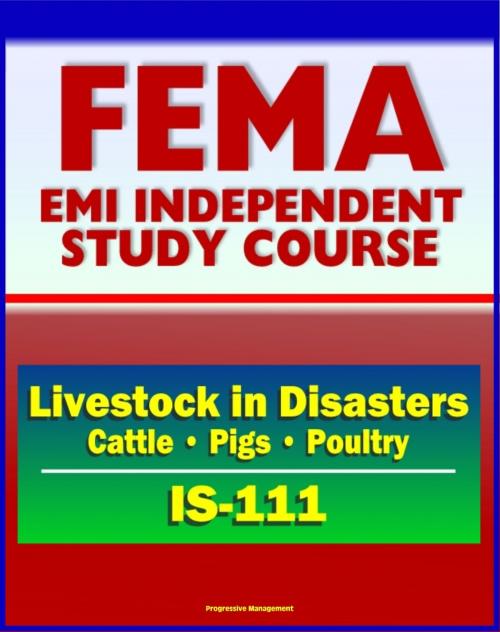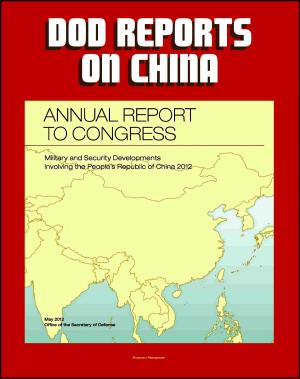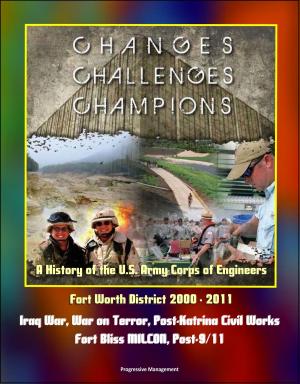21st Century FEMA Study Course: Livestock in Disasters (IS-111) - For Farmers, Extension Agents - Cattle, Pigs, Poultry, Floods, Storms
Business & Finance, Personal Finance, Nonfiction, Social & Cultural Studies, Political Science| Author: | Progressive Management | ISBN: | 9781466162860 |
| Publisher: | Progressive Management | Publication: | June 25, 2011 |
| Imprint: | Smashwords Edition | Language: | English |
| Author: | Progressive Management |
| ISBN: | 9781466162860 |
| Publisher: | Progressive Management |
| Publication: | June 25, 2011 |
| Imprint: | Smashwords Edition |
| Language: | English |
This Federal Emergency Management Agency (FEMA) independent training course manual from the Emergency Management Institute (EMI). is for farmers, extension agents, emergency managers and others who have interests in the livestock industry. It describes the various hazards that animals can face and how to mitigate them, as well as how to respond to an actual disaster. The livestock industry is a multi-billion dollar business that provides food for the American people as well as those overseas. It is important to insure our livestock are safe from hazards and will not suffer from the effects of hazards.
While large-scale disasters often receive more media attention, more animals and farms suffer from small-scale, localized disasters. Examples of common local disasters include transportation accidents, adverse weather, fires, hazardous materials spills, and disease outbreaks.
The cumulative cost of small-scale disasters to the U.S. usually exceeds the cost of large-scale disasters. That is why disaster preparedness is most effective at the local level, where it is initiated by the people most likely to be affected by the disaster.
During large- and small-scale disasters, farmers and producers can suffer considerable economic losses, the safety and supply of food can be threatened, and animals may be injured or killed. In some instances, people have put themselves and others at risk attempting to rescue livestock, while others have refused to evacuate or go to shelters because of concerns about their animals.
Purpose of the Course - History and research indicate that individuals offer the best protection against losses in disasters. Some of the best information on how to mitigate and respond to disasters comes from the field of emergency management. By analogy, livestock farmers and producers know how to mitigate the impact of disasters on their farms, because they are experts in livestock agriculture. Emergency managers can help them optimize those efforts, because they are the professionals in a community responsible for preparing the community for disasters and coordinating the response to disasters.
This Federal Emergency Management Agency (FEMA) independent training course manual from the Emergency Management Institute (EMI). is for farmers, extension agents, emergency managers and others who have interests in the livestock industry. It describes the various hazards that animals can face and how to mitigate them, as well as how to respond to an actual disaster. The livestock industry is a multi-billion dollar business that provides food for the American people as well as those overseas. It is important to insure our livestock are safe from hazards and will not suffer from the effects of hazards.
While large-scale disasters often receive more media attention, more animals and farms suffer from small-scale, localized disasters. Examples of common local disasters include transportation accidents, adverse weather, fires, hazardous materials spills, and disease outbreaks.
The cumulative cost of small-scale disasters to the U.S. usually exceeds the cost of large-scale disasters. That is why disaster preparedness is most effective at the local level, where it is initiated by the people most likely to be affected by the disaster.
During large- and small-scale disasters, farmers and producers can suffer considerable economic losses, the safety and supply of food can be threatened, and animals may be injured or killed. In some instances, people have put themselves and others at risk attempting to rescue livestock, while others have refused to evacuate or go to shelters because of concerns about their animals.
Purpose of the Course - History and research indicate that individuals offer the best protection against losses in disasters. Some of the best information on how to mitigate and respond to disasters comes from the field of emergency management. By analogy, livestock farmers and producers know how to mitigate the impact of disasters on their farms, because they are experts in livestock agriculture. Emergency managers can help them optimize those efforts, because they are the professionals in a community responsible for preparing the community for disasters and coordinating the response to disasters.















